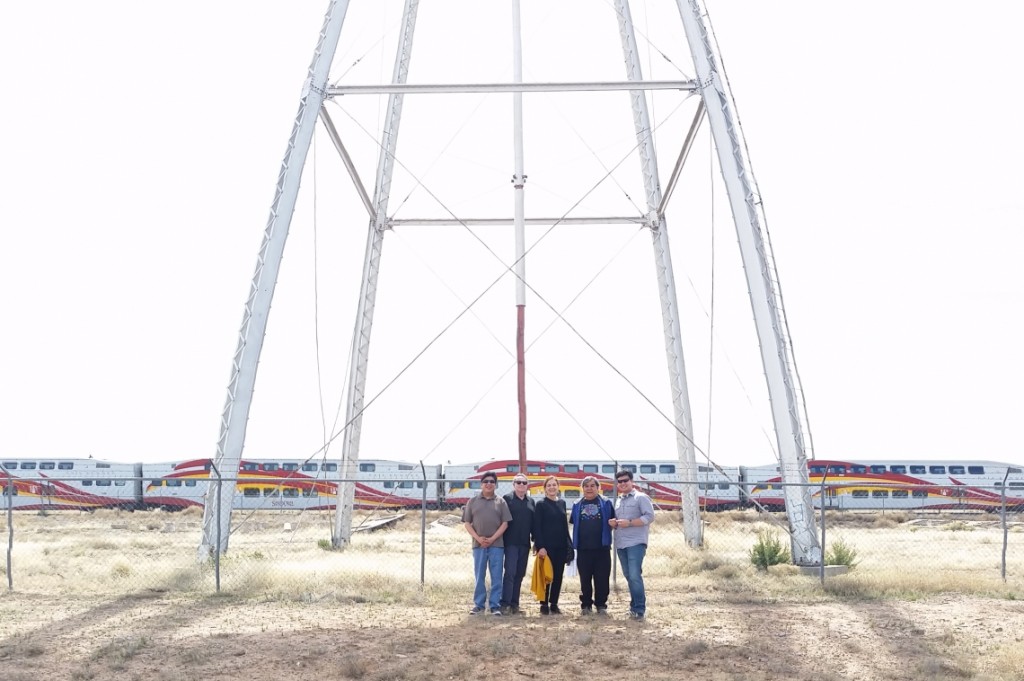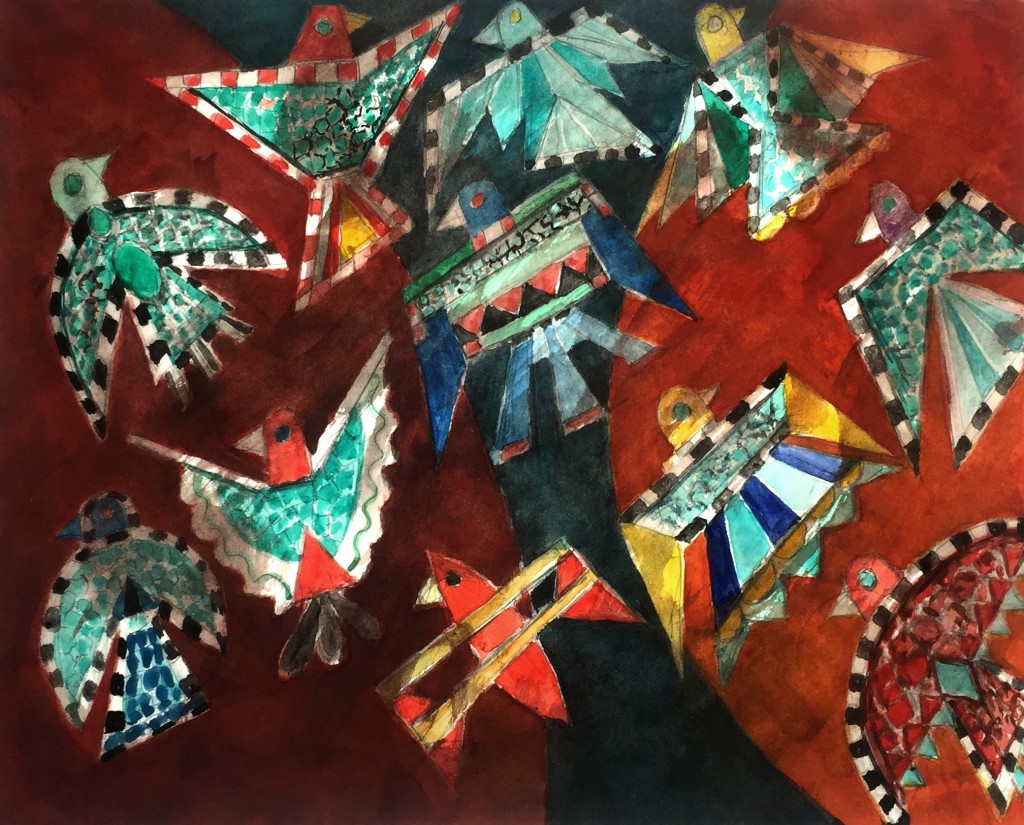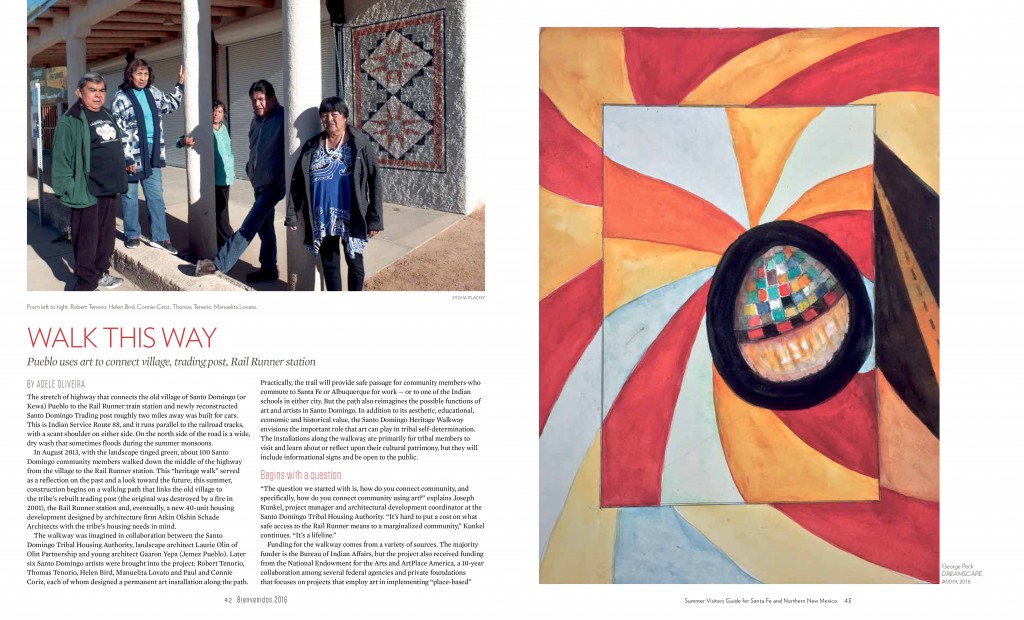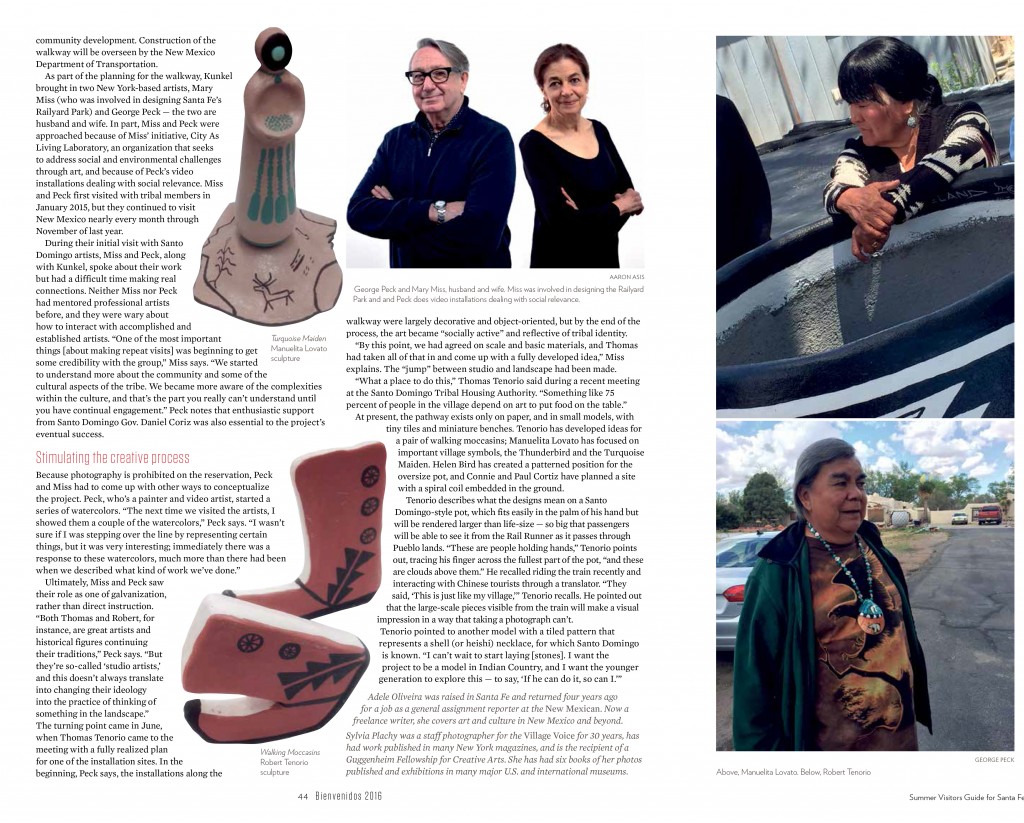No products in the cart.
SANTO DOMINGO HERITAGE TRAIL Arts Project
George Peck and Mary Miss with local tribal artists from the Santo Domingo Pueblo
Santo Domingo Pueblo, NM is located near a heavy community rail station between Santa Fe and Albuquerque, NM. However, residents from the Santo Domingo tribe currently have no safe pedestrian access to the train station, and conversely, tourists and independent travelers have no safe way to walk from the train to destinations within the pueblo. The Santo Domingo Tribal Housing Authority, working with Laurie Olin and his landscape architecture firm, have proposed a pedestrian way that would connect the train with a new tribal artists markets and affordable housing options. The path itself will feature local artist-designed nodes for resting and lingering along the way. Through partnerships with the Johns Hopkins School of Public Health and the University of Virginia School of Public Health and School of Architecture, the tribe is also interested in exploring the role that this pedestrian way will contribute to improving physical and mental health for the Santo Domingo community.
Invitation of outside artists and advisers:
Two New York based artists, Mary Miss and George Peck, were invited as artistic advisers in creating a walkway with local tribal artists.
After a year of collaboration between artists from the Santo Domingo (Kewa) Pueblo and New York artists Mary Miss and George Peck, ground breaking takes place this week for a new tribal development project. In conjunction with new housing a trail is being built to connect the main village with the new development. Along the trail the artists have designed six stopping places with the support of an Artplace grant.
The Kewa artist’s work previously focused on pottery and jewelry making; working with the New York based artists they nourished their history and conveyed aspects of their culture particularly for the young people of the tribe. George and Mary welcomed the opportunity to collaborate and help communicate the rich culture of the Kewa community.
George and Mary’s styles are very different and this was clear from the beginning. One of the things they learned was that this difference would work extremely well in achieving what they set out to accomplish. George’s practice of using watercolor storyboards to describe scenes, ideas, and situations for his video installations became an essential communicative tool. The body of work that accumulated via this visual language was called “Diary” and it continued even after the work was completed. This record of interactions is an integral part of the project and it is also a work of art in itself.
“Walk This Way” Bienvenidos Magazine, Santa Fe, New Mexico, May 2016
Date:
October 4, 2022






